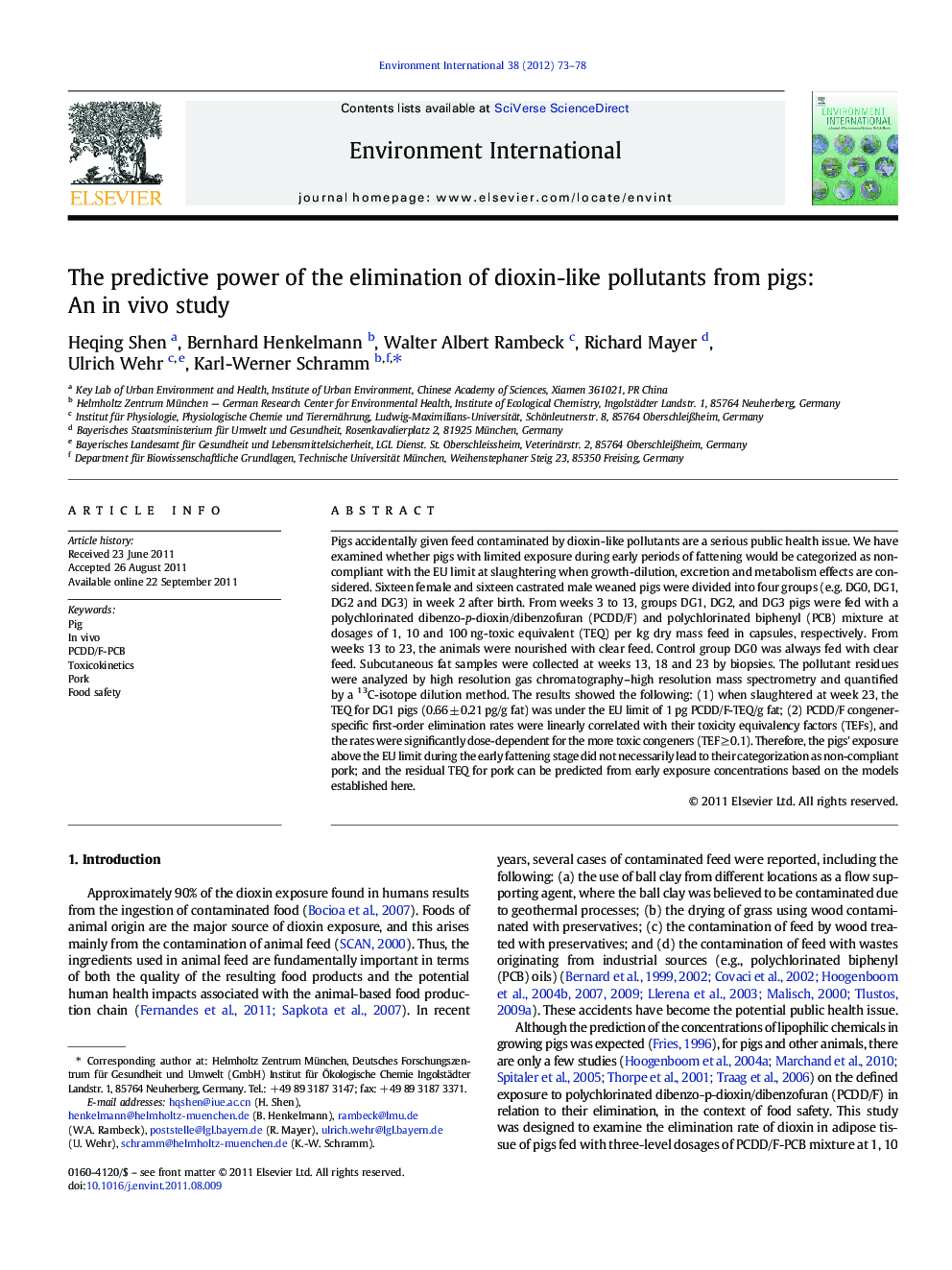| Article ID | Journal | Published Year | Pages | File Type |
|---|---|---|---|---|
| 4423165 | Environment International | 2012 | 6 Pages |
Pigs accidentally given feed contaminated by dioxin-like pollutants are a serious public health issue. We have examined whether pigs with limited exposure during early periods of fattening would be categorized as non-compliant with the EU limit at slaughtering when growth-dilution, excretion and metabolism effects are considered. Sixteen female and sixteen castrated male weaned pigs were divided into four groups (e.g. DG0, DG1, DG2 and DG3) in week 2 after birth. From weeks 3 to 13, groups DG1, DG2, and DG3 pigs were fed with a polychlorinated dibenzo-p-dioxin/dibenzofuran (PCDD/F) and polychlorinated biphenyl (PCB) mixture at dosages of 1, 10 and 100 ng-toxic equivalent (TEQ) per kg dry mass feed in capsules, respectively. From weeks 13 to 23, the animals were nourished with clear feed. Control group DG0 was always fed with clear feed. Subcutaneous fat samples were collected at weeks 13, 18 and 23 by biopsies. The pollutant residues were analyzed by high resolution gas chromatography–high resolution mass spectrometry and quantified by a 13C-isotope dilution method. The results showed the following: (1) when slaughtered at week 23, the TEQ for DG1 pigs (0.66 ± 0.21 pg/g fat) was under the EU limit of 1 pg PCDD/F-TEQ/g fat; (2) PCDD/F congener-specific first-order elimination rates were linearly correlated with their toxicity equivalency factors (TEFs), and the rates were significantly dose-dependent for the more toxic congeners (TEF ≥ 0.1). Therefore, the pigs' exposure above the EU limit during the early fattening stage did not necessarily lead to their categorization as non-compliant pork; and the residual TEQ for pork can be predicted from early exposure concentrations based on the models established here.
► We find the defined exposure of PCDD/F-PCB to piglet above the EU limit during the early fattening stage does not necessarily lead to their categorization as non-compliant pork. ► Based on our established models, the residual TEQ for pork can be predicted from the pigs’ early exposure concentrations. ► The models could be useful the risk management of the possible dioxin feed accident.
